Question
(a) In Fig. 6.1, a ray of red light is shown passing through a triangular glass prism and on to
another prism that is identical but upside down.
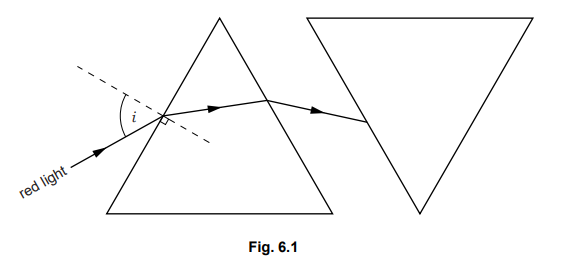
(a) The angle of incidence of the red light at the first surface is shown on Fig. 6.1 as i.
On Fig. 6.1, use the letter r to mark clearly the angle of refraction at the first surface.[1]
(ii) On Fig. 6.1, complete the path of the ray through the right-hand prism and out
into the air again. Label the emergent ray “line R”. [3]
(iii) The beam of red light is moved so that it shines into the right-hand prism along line R.
Using the letter P, mark clearly the point where this ray will emerge from the left- hand prism. [1]
(b) On another occasion, a beam containing a mixture of red and blue light is shone into a prism, as shown in Fig. 6.2.
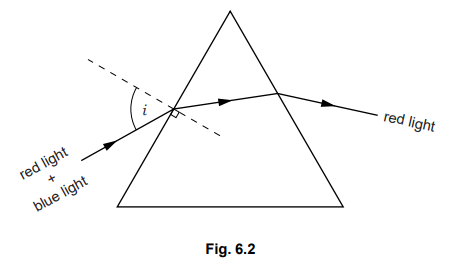
On Fig. 6.2, draw the path of the blue light through the prism and out into the air again. [3]
Refraction is occurring at the first surface.
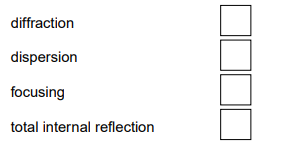 [1] [Total: 9]
[1] [Total: 9]Answer/Explanation
Ans: (a) (i) r correctly shown
(ii) bent up at first surface bent up at second surface straight line within prism
(iii) P clearly shown as the original point of entry(b) (i) blue light refracted from same point at first surface blue shown with greater refraction blue light always below red light
(ii) dispersion
Question
The apparatus in Fig. 7.1 is producing a visible spectrum from a filament lamp (white light source).
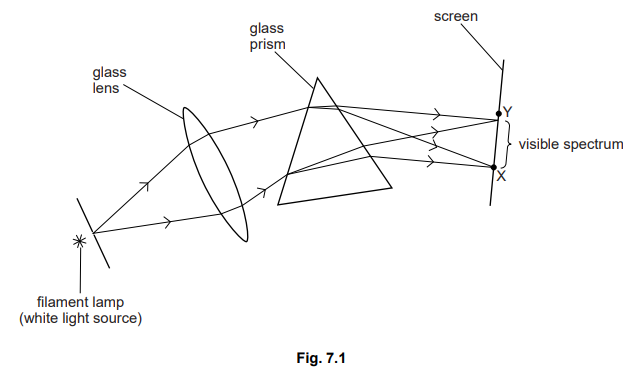
(a) Which two things is the lens in Fig. 7.1 doing to the light?
Tick two boxes.
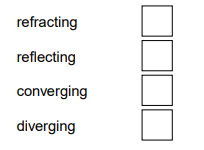 [2]
[2]
(b) Which two things is the prism in Fig. 7.1 doing to the light?
Tick two boxes.
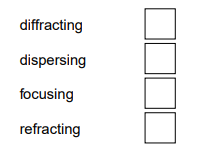 [2]
[2]
(c) Which colour light will be seen at point X, at the bottom edge of the visible spectrum?
…………………………………………………………………………………………………………………….. [1]
(d) A sensitive thermometer shows a small rise in temperature when held at point Y, just
above the top edge of the visible spectrum.
(i) Which type of electromagnetic radiation is the thermometer detecting?
………………………………………………………………………………………………………………….
(ii) Suggest why this radiation is present.
………………………………………………………………………………………………………………….
[2] [Total: 7]
Answer/Explanation
Ans: (a) refracting, converging
(b) dispersing, refracting
(c) violet accept blue/purple/mauve/indigo
(d) (i) infra-red / IR
(ii) idea of lamp hot/emitting heat OR glass passes IR
